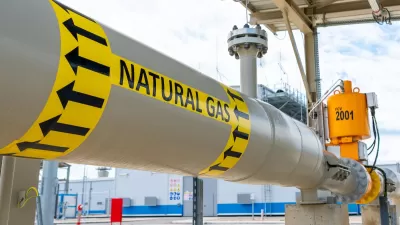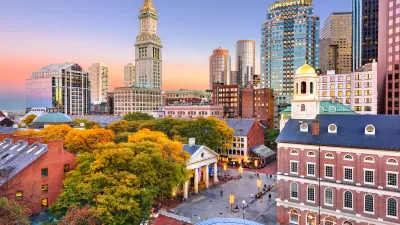Banning gas-powered appliances is one part of a broader toolkit of changes in building codes that could vastly improve efficiency.

The debate over gas stoves blew up—no pun intended—in the last week, but Daniel C. Vock argues that the focus on appliances overshadows other ways that building codes can promote efficiency. “Just revising the rules governing energy use in new construction can lead to sizable reductions in air pollution, advocates say, not to mention lower bills and a more comfortable environment for the people who live and work in the buildings.”
According to Vock, “The federal Energy Department estimates that if every state adopted the most recent model building codes for commercial and residential properties, it could reduce carbon dioxide pollution by 900 million metric tons by 2040.” The newest codes require added insulation, more efficient equipment, better lighting, and other changes that lower greenhouse gas emissions and often don’t add to construction costs.
Funding from the Inflation Reduction Act (IRA) can help states move toward updating their codes, Vock writes. “For example, the law provides $330 million in grants to state and local governments to adopt the latest residential and commercial codes. It sets aside more than twice that amount of money—$670 million—to develop ‘stretch codes’ that local governments can impose to develop ‘zero-energy’ buildings that produce enough renewable energy to offset their core energy use.”
FULL STORY: Cutting Building Emissions is About More Than Gas Stoves

Alabama: Trump Terminates Settlements for Black Communities Harmed By Raw Sewage
Trump deemed the landmark civil rights agreement “illegal DEI and environmental justice policy.”

Planetizen Federal Action Tracker
A weekly monitor of how Trump’s orders and actions are impacting planners and planning in America.

Why Should We Subsidize Public Transportation?
Many public transit agencies face financial stress due to rising costs, declining fare revenue, and declining subsidies. Transit advocates must provide a strong business case for increasing public transit funding.

Understanding Road Diets
An explainer from Momentum highlights the advantages of reducing vehicle lanes in favor of more bike, transit, and pedestrian infrastructure.

New California Law Regulates Warehouse Pollution
A new law tightens building and emissions regulations for large distribution warehouses to mitigate air pollution and traffic in surrounding communities.

Phoenix Announces Opening Date for Light Rail Extension
The South Central extension will connect South Phoenix to downtown and other major hubs starting on June 7.
Urban Design for Planners 1: Software Tools
This six-course series explores essential urban design concepts using open source software and equips planners with the tools they need to participate fully in the urban design process.
Planning for Universal Design
Learn the tools for implementing Universal Design in planning regulations.
Caltrans
Smith Gee Studio
Institute for Housing and Urban Development Studies (IHS)
City of Grandview
Harvard GSD Executive Education
Toledo-Lucas County Plan Commissions
Salt Lake City
NYU Wagner Graduate School of Public Service





























